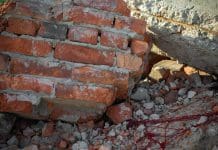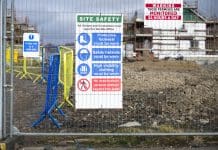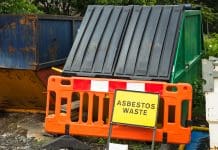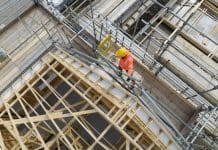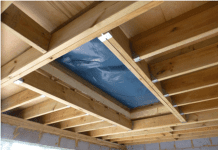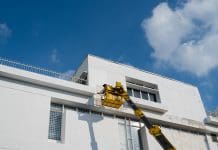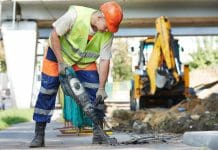It is possible for BIM to enable the health, safety and environment within the construction industry, as explained here by Andy Radley, Group BIM Director at Kier Group…
Despite the fact that the UK construction sector only accounts for approximately 4% of the UK workforce, 26% of all reported occupational fatalities were from the construction industry (HSE, 2015). In addition, 0.5m working days are lost due to mostly preventable accidents and health related issues.
Kier, like most organisations in this sector, is mindful of these numbers and therefore positions the welfare and wellbeing of its staff, stakeholders and clients high on its strategic and operational agenda. This usually goes hand- in-hand with a robust ethical approach to business which nurtures a culture of respect for the environment that we live and work in. This approach is enabled by multiple initiatives, practices and behaviours which are then underpinned by legislation, governance and guidance. In the context of BIM, there are rumours of the UK BIM central stewardship group issuing a new PAS – PAS 1192 – 6 which is being described as ‘BIM for Health and Safety’.
In an organisation that is as diverse and complex as Kier, our BIM offering which forms part of our Digital Construction Dept. is one of those business functions that already transcends the design and build arena. We are constantly looking to embed further and get the best value in the use of BIM from the investment we have made in both our personnel and technologies. In the context of health and safety, we have for some time been advocating the potential of digital construction tools like BIM to further strengthen our health, safety and environment (HS&E) practices across the whole group.
When it comes to HS&E, we probably need to set aside the Bew/Richards ‘BIM Wedge’ as we are not aiming to achieve any ‘Level’ of BIM, just the better and expanded utilisation of our digital tools that is appropriate to meet the challenges relating to the matters we need to address.
At the highest level, we have recognised that we can use our digital tools to keep people safer and protect the environment by the:
- Reduction of site visits;
- Reduction of time spent on site;
- Decreasing the amount of people required on site;
- Better understanding and validation of complex construction processes;
- Better insight and communication of potential hazards (physical and environmental);
- Enhancement of emergency planning.
Pre-Construction
During the early stages of any project, even during the tender stage, the site location, position and layout need to be understood. Issues, if highlighted and practically addressed – in circumstances where there may be unique challenges, restricted access or stakeholder involvement – we would appraise which digital tools would be necessary or appropriate to deploy.
For Kier, it is becoming the norm to carry out a drone survey. If planned and executed correctly, this can provide benefits throughout the entire duration of project mobilisation and handover. The drone footage can reveal features that can focus a remediation survey on areas that may have an impact on the site. This could include, for example, the outlines of a long-demolished building or the location and spread of hazardous waste that may have been deposited or buried on site. We would also try to ensure that we captured adjacent roads and buildings as part of a dilapidation survey to prevent any disputes over the impact of our presence on the site. The added value of this activity is that we could use photo telemetry techniques to convert the images into a realistic and reasonably accurate model, into which we can place our proposed site boundary, temporary works and new structure. In some instances, we would simply post process some of the film taken and demarcate walkways, laydown areas, COSHH zones, etc. We may sometimes use a combination of models and animations to create a site induction video. In general, the benefits of this approach can be carried on into the construction phase and should enable us to:
- Inform and help develop a better, more realistic construction phase plan;
- Safety/environmental teams can gain an enhanced understanding of activities that may carry a risk on, or immediately around the site;
- Reach a better level of engagement with client and key stakeholders;
- Reduce site visits by providing access to 3D data and visuals via a secure project Common Data Environment (CDE).
During construction, we now more or less take for granted that most of the information we are provided with is getting progressively more accurate due to the collaborative BIM processes that are being adopted across the industry. This has afforded us opportunities to work with, and challenge our supply chain to do more to help us meet our HS&E targets:
- Use of mobile tools for tracking of near misses and logging of real-time hazards;
- Design out risk;
- Design out waste;
- Co-ordination with underground services/interfaces with the general public.
Supply chain
On several projects the structural consultant and contractor were challenged to improve safety during construction. They designed in some permanent edge protection with mid rail, post spacings and toe plates which were compliant with the HSE Guidelines – all of which were built-in and ultimately incorporated into the finished works as the parapet edge.

The image above is supplied by Mabey Plant Hire. They have been proactive in embracing BIM, by creating models of their proposed temporary works which allows them to validate their proposed design before going on site, picking up any clashes and coordination issues before we take possession and incorporate them into the master federated BIM model. Having a more complete model ensures we can assess the impact of the temporary works scheme and use as part of H&S briefings and toolbox talks.
Clients

Stakeholder requirements include the ability to demonstrate how to keep the pedestrian flow free, and position hoarding correctly so construction can still progress. The image above shows how to provide overhead cover when accessing the station. It also demonstrates to the client what areas will be closed during construction, and also to co-ordinate site compound with existing underground services and maintenance of emergency access routes.
To engage effectively with clients, it’s important to:
- Understand disruption;
- Engage with staff;
- Consider stakeholders and public safety;
- Work with the supply chain and educate them to use the BIM model to understand logistics and access.
The quest for reducing accidents and work-related illnesses is ongoing. BIM will, over time, contribute to a safer and healthier built environment as will the application of emerging technologies. Until the day that all buildings are created in a factory environment with robots taking over all on site tasks, there will always be an aspiration to improve the welfare of those who do. BIM may not have all the answers; it is, however, part of the continuous improvement process taking us a step closer to zero accidents on site. ■
. . . . . . . . . . . . . . . . . . . . . . . . . . . . . . . . . . . . . . . . . . . . . . .
Andy Radley
Group BIM Director
Kier Group


